 |
Sardinia's Mine |
|
Fluminimaggiore area |
|
This Area is another well known
mine complex. The mines that are located in this area are:
Santa Lucia Mine
Su Zurfuru Mine
Gutturu Pala Mine
Genna Morexi
Arenas
Candiessus


S. Lucia Mine: is located 4 km NW of Fluminimaggiore and the main exploiting sites are know as Pala su Sciusciu and Mena de S'Oreri. First work started one century ago and the mine closed in 1980 .
From this mine many are the mineral specimens that were collected in the past: first of all very nice Fluorites with colour from purple to white and very rare blu; other fine specimens are the Barite with big crystals and with different crystalization and different colour (famous are the yellow barite on white cubic small fluorite); among the other minerals rarest Linarite occurs in XX up to 1 cm.
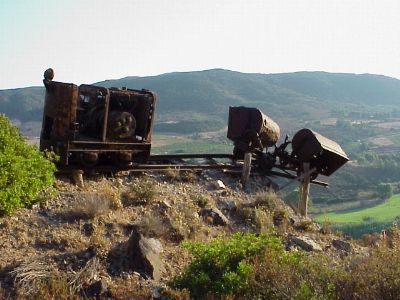 |
|
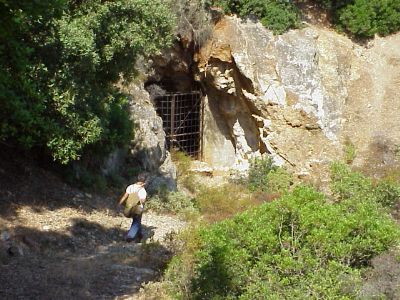 |
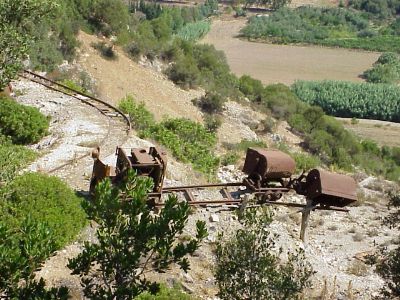 |
|
|
|
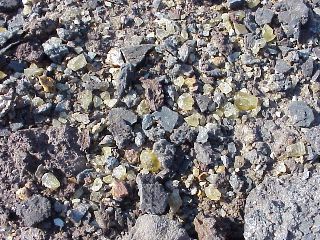 |
Pala su Sciusciu Mine (viewed from s'Oreri ) |
Piece of yellow barite on the dumps |
To reach the mine of Santa Lucia is simple. Few kilometers before reaching Fluminimaggiore (arriving from Arbus) leave the the S.S. 126 and take the minor road (provincial) Buggerru following the left side of of riu Mannu . After about one kilometer take a small road to the left going to the Santa Lucia area. The site from the archaeological-industrial point of view, it is of first level.
|
The plant of the washery shows those that presumably were the various phases of the workmanship: the raw material that arrived from the places of extraction was roughly sorted in a first plant (1); with a first ribbon conveyor was sent to a second millstone for a further reduction of its dimensions (2); a second ribbon conveyor brought to a further plant (3) in which was treated and prepared for the treatment in the real washery; a third ribbon conveyor (4) brought the treated material towards two siloses (5) that were the antechamber of the washery; with a new ribbon conveyor the material was introduced into the washery (6) for the chemical treatment; at the end of the selection the result (fluorite, barite and galena) was stocked in four great silos (7). The inside of the washery leaves without words for the completeness of the original tools and of the original layout of such a clarity in its general organization. The plant seems to have been abandoned suddenly, everything is in its place, even the keys are inserted in the control panel. |
|
|
The first part of the washery, is constituted by a great centrifuge where the raw material was "mixed" . The second part was constituted by agitators where, through also chemical agents, the raw mixed material was separated to get the final pure products. A system of platforms brought the material from the place of extraction to the washery. The photo below is one "discovery" immediately done out of the first entry to the mine: the electric locomotive that transported the small truck.
|
|
|
|
|
|
| The bridge of the small railroad | Part of the extraction was in quarries cutting a crest of the hills. At the end of the cut there is another gallery |
Su Zurfuru Mine: is located just out of Fluminimaggiore along the road to Iglesias. The mine started operating in 1880 till some years ago. This area is characterized by a contact metamorphism and skarn formation. In the massive skarns at the contact between marbles and schists there are andradite,epidote, fluorite and metallic minerals such as galena, pyrrothite and so on. The vein skarns include quartz and metallic minerals. An oxidation zone in the higher part produced many interesting minerals such as mimetite.
This mine are very rich of different minerals, same only for systematic porpouse many other interesting for collection with carachteristic crystalization and colour, here a short list:Actinolite, Albite, Andradite, Anglesite (short prismatic semi-trasparent xls till 1 cm), Apophyllite, Armenite, Arsenopyrite, Azurite, Barite (short prismatic xls in pink colour), Bornite, Calcite, Carminite, Clorargirite, Cerussite (common in the oxidation zone), Calcopyrite, Covellite, Dolomite, Epidote, Fluorite (maybe the best minerals from this mine: in differenty crystalization with big crystals bigger than 4 cm, with different colour from green to purple to blue), Galena (out standing specimens in the past with big crystal till 3 cm), Gypsum, Hedembergite, Hematite, Hemimorphite, Kaolinite, Magnetite, Malachite, Mimetite (in outstanding specimens with hexagonal, tabular, acicular crystalization with colour from green to yellow), Pharmacosiderite, Pyromorphite, Quartz (very interesting the specimens with colorless, prismatic, bypiramidal crystals), Scorodite, Silver, Sphalerite, Smithsonite, Sulphur, Wollastonite.
The history of the Su Zurfuru
mine  starts, as for other mines of the zone of Fluminimaggiore, with the
entrepreneur George Henfrey, that noticed all the most promising mining permissions in the
zone in 1877. Then important research activitiesfollowed and about ten
years later, in 1889, the concession of the mine to the The Victoria Mining Company
Limited, of which Henfrey was the most important shareholder. The material was
treated in the small mechanical washery of Giovanni Longu, from there to the dock of
starts, as for other mines of the zone of Fluminimaggiore, with the
entrepreneur George Henfrey, that noticed all the most promising mining permissions in the
zone in 1877. Then important research activitiesfollowed and about ten
years later, in 1889, the concession of the mine to the The Victoria Mining Company
Limited, of which Henfrey was the most important shareholder. The material was
treated in the small mechanical washery of Giovanni Longu, from there to the dock of Portixeddu (what in Sardinian means, in fact,
"dock") to the continent.
Portixeddu (what in Sardinian means, in fact,
"dock") to the continent.
Su Zurfuru mineralogy revealed very complex and rich of different paragenesis: besides the lead and the zinc, in fact, arsenic, bismuth, copper and fluorite were present with iron sulphurs.
The life of the mine was
conditioned by the presence of thin clayey material, that sometimes provoked some
sudden landslides with tragic result: the most serious the 23 November of 1926 happened
when two workers were buried under a layer of thin clay that invaded a gallery of the
mine.
In 1891 the passage of the
concession to The United Mines Company Limited and five years later to the
Pertusola. This last company built a new washery, connected it through a
railroad with the yards of the mine and with , Gutturu Pala and Earth Niedda,
 that were respectively acquired in 1905 and in 1907.
that were respectively acquired in 1905 and in 1907.
Followed a long period of inactivity. Only the washery kept on treating the mineral extracted in the near mine of Gutturu Pala, where all the miners had been transferred.
In the fifties the jobs were taken back. The drawn out material came to a large extent transported with the trucks . The sixties saw the definitive crisis of the Pertusola and the progressive releasing of the society from Sardinia . In 1968 the concession passed to Zincifera Sarda, under the control of the Sardinian Mining corporate body. Subsequently it was the time of the Samim and finally of the SIM (Society Italian Mines), in 1987. In these years activities stop entirely in the mine of Su Zurfuru. Only in the adjoining Gutturu Pala the activities continued, but for few years, then the definitive closure.
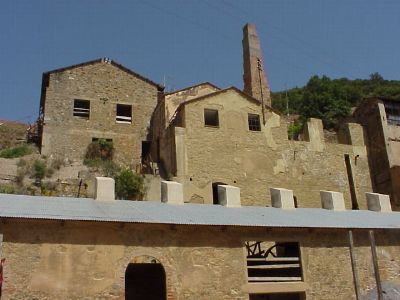 |
|
|
Su Zurfuru , the plant and the washery. On the left one of the entrance of the mine. |
Gutturu Pala Mine: after 3 km on the road of Su Zurfuru is possible find the important Pubusino spring that was one of the most important hidric reserve for the mine of this area, near this spring there are the close entrance to the mine of Gutturu Pala. From this mine interesting white calcite specimens with two different crystalisation.
|
|
|
Essential bibliography
SANDRO MEZZOLANI, Andrew SIMONCINI - Sardinia to be saved. Landscapes and Architectures of
the Mines. - Publisher Sardinian Photographic File. Nuoro 1993
Anthony Francis FADDA - mining Sites in Sardinia. - Coedisar. Cagliari 1997
RMI -
4/1993 - 1/1994